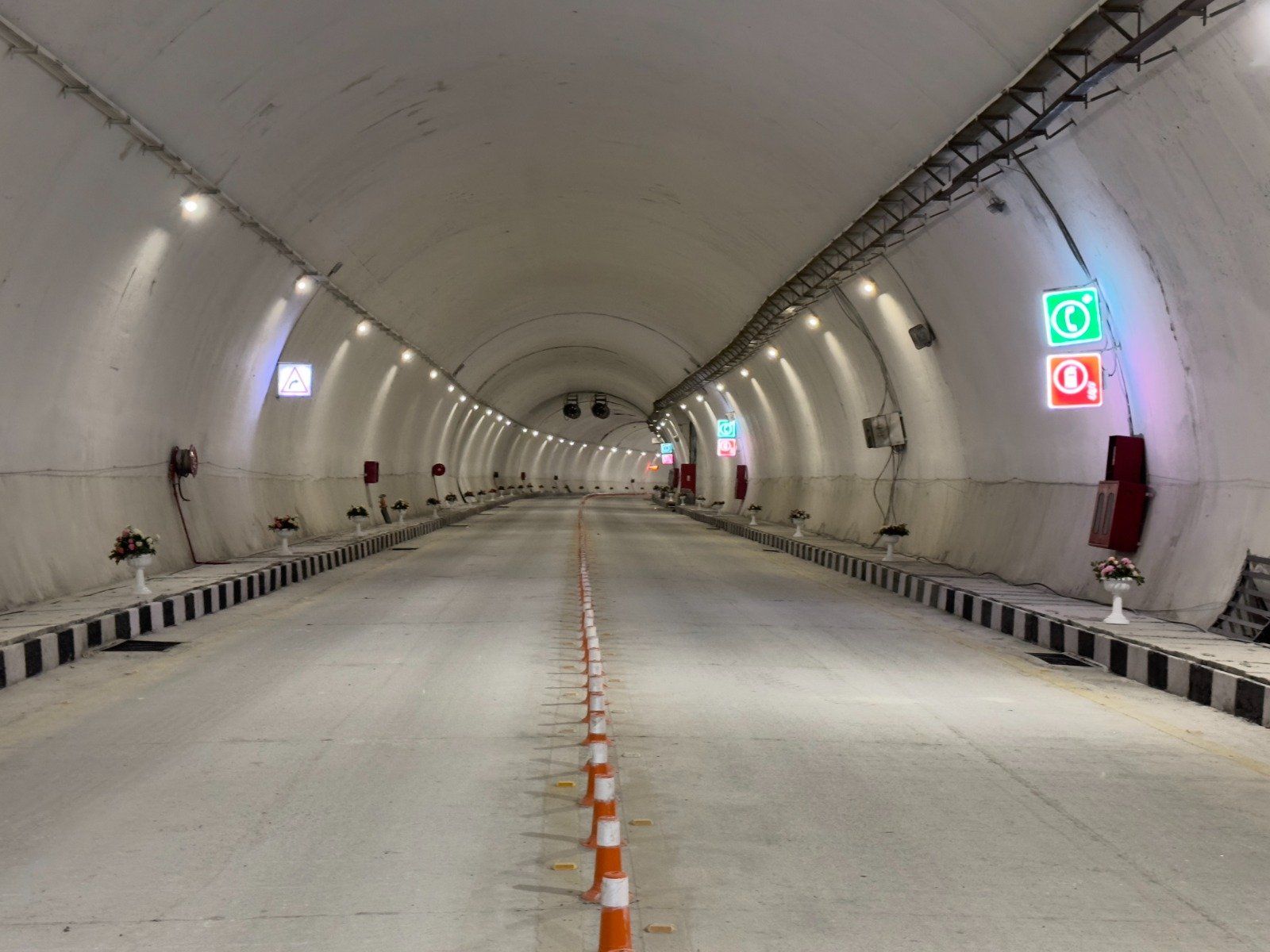Updated March 11th, 2024 at 14:14 IST
Sela Tunnel inauguration to enhance military mobility and strategic defense along LAC
Prime Minister Narendra Modi virtually inaugurates the Sela Tunnel, a vital infrastructure project connecting Tezpur in Assam to Tawang in Arunachal Pradesh.
Advertisement
Arunachal Pradesh: In a significant milestone for India's infrastructure development, Prime Minister Narendra Modi virtually inaugurated the Sela Tunnel from Itanagar on Saturday. Constructed over the past five years by 650 personnel and labourers, this monumental project has culminated in the realization of a critical all-weather connectivity route between Tezpur in Assam and Tawang in Arunachal Pradesh. The inauguration ceremony, held on March 9, marked the official dedication of the Sela Tunnel to the nation, underscoring its strategic importance in facilitating year-round access to the Tawang sector and enhancing military mobility along the Line of Actual Control (LAC).
Built by the Border Roads Organisation (BRO) at an altitude of 13,000 feet, the Sela Tunnel serves as a vital link between Guwahati and the strategically significant Tawang region. With a total cost of Rs 825 crore, the tunnel epitomizes India's commitment to bolstering border infrastructure in challenging terrain. It is poised to revolutionize connectivity to the Tawang region of Arunachal Pradesh, providing a lifeline for both military operations and civilian travel.
Advertisement
Impact and strategic significance
The completion of the Sela Tunnel heralds a new era of defence preparedness and socio-economic development for the region. By bypassing treacherous terrain and hazardous weather conditions, the tunnel not only facilitates smoother troop movements but also catalyzes economic growth, tourism, and employment opportunities in the Tawang region. Furthermore, it addresses longstanding infrastructure deficiencies, providing seamless connectivity previously hindered by single-lane routes and hazardous bends.
Advertisement

Overcoming formidable challenges posed by extreme weather conditions, including high snowfall, rainfall, and sub-zero temperatures, the project witnessed relentless efforts from personnel braving adverse working conditions. The New Austrian Tunneling Method (NATM) was employed for construction, leveraging the inherent strength of the surrounding rock mass to support the tunnel structure. The sheer scale of the endeavour is evident from the staggering quantities of construction materials utilized, including 71,000 metric tons of cement, 5,000 metric tons of steel, and 800 metric tons of explosives.
Technological advancements and safety measures
Constructed with meticulous attention to quality and safety, the Sela Tunnel boasts state-of-the-art features, including a comprehensive ventilation system, firefighting devices, and advanced monitoring systems. Designed to accommodate a traffic density of 3,000 cars and 2,000 trucks per day, with a maximum speed of 80 km/hr, the tunnel adheres to international standards, ensuring the safety and well-being of travellers.

The inauguration of the Sela Tunnel aligns with India's broader vision of enhancing connectivity and infrastructure in border regions. It represents a testament to the unwavering commitment of the government and the BRO to bolster national security and fostering regional development. With continued investments and initiatives, such as the allocation of funds under the GS Capital Head, the government aims to further accelerate infrastructure development in border areas, ensuring sustained progress and prosperity for the nation.
The Sela Tunnel stands as a symbol of India's determination to overcome geographical barriers and strengthen its strategic foothold in the border region. As a testament to the indomitable spirit of innovation and perseverance, it embodies the nation's resolve to forge ahead on the path of progress and prosperity. With its inauguration, the Sela Tunnel not only ushers in a new era of connectivity but also heralds a brighter future for the Tawang region and beyond.
Advertisement
Published March 11th, 2024 at 14:14 IST